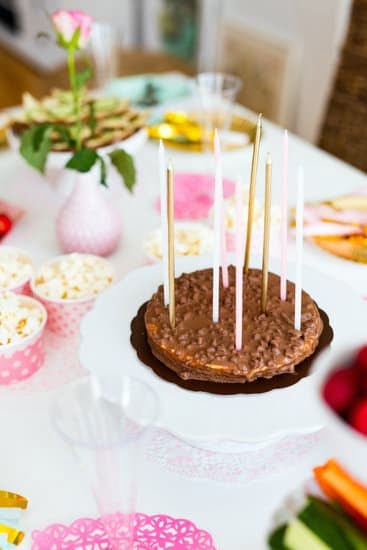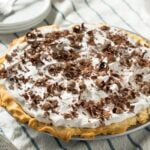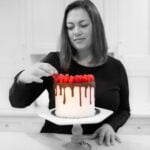If you’ve ever wondered how do you decorate a cake with fondant, you’re in the right place. Fondant is a versatile and popular choice for creating beautifully decorated cakes, and with the right techniques, you can achieve stunning results.
In this article, we’ll explore the basics of working with fondant, from understanding what it is to mastering advanced techniques. Whether you’re a beginner or looking to enhance your skills, this comprehensive guide will walk you through the entire process of decorating a cake with fondant.
Understanding fondant is essential before diving into the decorating process. We’ll start by explaining what fondant is and the different types available. Additionally, we’ll discuss the tools and materials needed for successfully working with fondant.
Once you have a good grasp of the basics, we’ll move on to preparing the cake for fondant, including leveling and icing the cake, applying a crumb coat, and chilling the cake. Then we’ll delve into rolling out the fondant, covering the cake with it, adding decorative elements, troubleshooting common issues that may arise during the decorating process, and finally storing and transporting your masterpiece.
Lastly, we’ll touch on mastering advanced techniques and showcase tips for photographing your fondant cakes and sharing them on social media.
Preparing the Cake for Fondant
Before applying fondant to a cake, it’s crucial to ensure that the surface is smooth and level. This can be achieved by using a long serrated knife or cake leveler to trim off any domed or uneven areas.
Once the cake is leveled, it should be lightly coated with a layer of buttercream or ganache to create a smooth base for the fondant. This process is known as crumb coating and helps to seal in any loose crumbs before applying the final layer of fondant.
To apply a crumb coat, use an offset spatula to spread a thin layer of icing over the entire cake. The goal is not to create a flawless finish at this stage, but rather to ensure that the cake is well-sealed and any imperfections are smoothed out. The crumb coat should then be chilled in the refrigerator for at least 30 minutes before applying the fondant.
After applying the crumb coat, it’s important to chill the cake until the icing becomes firm. This will make it easier to work with when adding the fondant. Additionally, a chilled cake reduces the risk of causing indentations or damaging the icing while handling it during the fondant application process.
How Do You Decorate a Cake With Fondanth3>
When decorating a cake with fondant, it’s essential to ensure that you have properly prepared your cake beforehand. Leveling and icing your cake, applying a crumb coat, and chilling it are all important steps in creating a flawless base for your fondant decorations. By following these steps carefully, you will set yourself up for success when it comes time to cover your cake with fondant and add decorative elements.
Rolling Out the Fondant
When it comes to decorating a cake with fondant, the process starts with rolling out the fondant to the right size and thickness. Here are the steps for rolling out fondant:
1. Dusting the work surface: Before rolling out the fondant, it’s important to dust the work surface with a small amount of powdered sugar or cornstarch to prevent sticking.
2. Kneading and rolling out the fondant: Take a small amount of fondant and knead it in your hands until it becomes more pliable. Then, using a rolling pin, roll out the fondant into a flat circle or rectangle that is slightly larger than the size of your cake.
3. Tips for preventing cracking and tearing: To prevent the fondant from cracking or tearing while rolling it out, make sure to regularly rotate it as you roll and lift it off the work surface to add more powdered sugar or cornstarch underneath if needed.
Following these steps is crucial for achieving a smooth and flawless finish when covering your cake with fondant.
Once you have successfully rolled out your fondant, you can move on to covering your cake with this smooth and versatile decorating material.
Covering the Cake With Fondant
Lifting and Draping the Fondant
Once you have rolled out your fondant to the desired size, it’s time to lift and drape it over the cake. Carefully lift the rolled fondant using a rolling pin, ensuring it is centered over the cake. Then gently drape it over the cake, being careful not to stretch it too much. You can use your hands to smooth out any air bubbles that may appear as you lay the fondant over the cake.
Smoothing the Fondant Over the Cake
To ensure a flawless finish, gently smooth the fondant over the surface of the cake using your hands. Start from the top and work your way down the sides of the cake, applying gentle pressure to press out any air pockets and create a seamless appearance. If you encounter any wrinkles or folds, don’t worry – these can be smoothed out with a fondant smoother or by gently patting them with your hands.
Trimming Excess Fondant
Once the fondant is smoothly draped over the cake, it’s time to trim off any excess. Use a sharp knife or pizza cutter to carefully trim away the extra fondant at the base of the cake. Be sure to cut at an angle away from the cake to create a clean edge. Take your time with this step to achieve a neat and professional finish.
By following these steps for covering a cake with fondant, you can achieve a beautifully decorated result that will impress your friends and family at any special occasion. No matter how you decorate a cake with fondant, keep in mind that practice makes perfect – so don’t be afraid to experiment and have fun with different designs.
Adding Decorative Elements
When it comes to decorating a cake with fondant, the possibilities are endless. From creating intricate designs to adding simple embellishments, fondant allows for a wide range of decorative elements to be added to your cake. Here are some tips on how to add decorative elements to your fondant-covered cake:
- Using cutters and molds: Fondant cutters and molds can help you create consistent and precise shapes for your cake decorations. Whether you want to add stars, hearts, or other shapes to your cake, using cutters and molds can make the process much easier.
- Creating ribbons, flowers, and other embellishments: Fondant is a versatile medium that can be shaped into various decorations such as ribbons, flowers, leaves, and more. With the right tools and techniques, you can add beautiful and intricate details to your cake.
- Painting and airbrushing fondant: Once your fondant decorations are in place, you can enhance them further by painting or airbrushing them with food coloring. This allows for endless customization and creativity when it comes to adding color and dimension to your fondant decorations.
Adding decorative elements to a fondant-covered cake requires patience, practice, and attention to detail. By mastering these techniques, you can take your fondant decorating skills to the next level and create stunning cakes that are sure to impress.
Remember that practice makes perfect when it comes to working with fondant. Don’t be afraid to experiment with different techniques and designs to find what works best for you. With time and dedication, you’ll be able to create beautiful fondant decorations that elevate your cakes to works of art.
Troubleshooting Common Issues
Dealing with issues while working with fondant is a common occurrence, but there are ways to troubleshoot and fix these problems to still achieve a beautiful cake. One common issue when working with fondant is dealing with air bubbles. Air bubbles can form between the fondant and the cake, causing unsightly bumps on the surface.
To prevent this, make sure to smooth out the fondant as you apply it to the cake, working from the center outward. If air bubbles do form, use a pin to gently prick the bubble and then smooth out the area.
Another issue that may arise while covering a cake with fondant is wrinkling and folds in the fondant. This can occur when lifting and draping the fondant over the cake, especially if the fondant is too dry or too wet. To fix this issue, carefully lift and stretch the affected areas of fondant before smoothing them out over the cake.
Tears in the fondant can be one of the most frustrating issues to deal with when decorating a cake. If you encounter tears in your fondant while covering your cake, don’t worry – they can be fixed. Gently press together both sides of the tear using your fingers or a small tool, such as a plastic smoother or spatula. Then use your fingers or a rolling pin to gently blend and smooth out the repaired area.
| Common Issue | Troubleshooting Solutions |
|---|---|
| Air Bubbles | Smooth out as you apply and use pin to prick any formed bubbles |
| Wrinkling and Folds | Lift and stretch affected areas before smoothing them out over the cake |
| Tears in Fondant | Gently press together both sides of tear; blend and smooth out repaired area |
Storing and Transporting Fondant Decorated Cakes
Once you’ve spent the time and effort creating a beautiful fondant-decorated cake, it’s essential to know how to properly store and transport it to ensure that your masterpiece remains intact. Because fondant is a sugar-based product, it can be susceptible to changes in temperature and humidity, so taking the right steps is crucial to maintaining the appearance of your cake.
When it comes to storing leftover fondant, it’s best to wrap it tightly in plastic wrap and place it in an airtight container. Store it at room temperature in a cool, dry place away from direct sunlight. Properly stored fondant can last for several weeks, so you can save any excess for future projects.
Transporting a fondant decorated cake requires care and attention to detail. It’s important to keep the cake as cool as possible during transport, especially in warmer weather. If possible, use a cake box with internal support such as cardboard rounds or non-skid mats to prevent the cake from shifting or sliding during transit.
To maintain the appearance of fondant decorations during transportation, avoid any sudden movements or sharp stops while driving. Keep the cake level and secure in your vehicle, and if necessary, consider using non-slip pads or towels underneath the cake box for additional stability.
| Storing Fondant | Transporting Cake |
|---|---|
| Wrap leftover fondant tightly in plastic wrap | Keep the cake cool during transport |
| Store at room temperature away from sunlight | Use internal support in the cake box |
| Fondant can last for several weeks when properly stored | Avoid sudden movements during transit |
Mastering Advanced Techniques
Once you have mastered the basics of working with fondant, you may want to explore advanced techniques to take your cake decorating skills to the next level. From creating intricate designs to crafting 3D figures, learning these advanced techniques can open up a world of possibilities for your fondant creations.
Layering fondant is a popular advanced technique that adds depth and dimension to your cakes. By layering different colors or textures of fondant, you can create stunning visual effects that will impress any audience. With careful cutting and placement, you can achieve beautiful patterns and designs that will elevate your cakes to works of art.
For those looking to add a whimsical touch to their cakes, creating fondant figures and 3D designs is a valuable skill to learn. Whether it’s crafting adorable animals, realistic flowers, or even beloved characters, sculpting with fondant allows for endless creativity. With practice and patience, you can bring your cake decorations to life with detailed figurines and eye-catching sculptures.
As you delve into mastering advanced techniques, consider investing in specialized tools and equipment designed for intricate fondant designs. From fine-tipped sculpting tools to precision cutters and embossers, having the right gear can make all the difference in bringing your creative vision to fruition. Additionally, exploring online tutorials and workshops can provide valuable guidance and inspiration as you refine your skills in working with fondant.
Whether you are looking to create show-stopping wedding cakes or whimsical birthday confections, mastering advanced techniques in fondant decoration will allow you to showcase your artistic flair and elevate your baked goods into edible works of art. With dedication and creativity, there is no limit to what you can achieve in working with fondant on your cakes.
Conclusion
In conclusion, decorating a cake with fondant is a creative and rewarding process that can result in stunning masterpieces. By understanding the basics of fondant, preparing the cake, rolling out the fondant, covering the cake, adding decorative elements, troubleshooting common issues, and mastering advanced techniques, you can create beautiful and unique cakes for any occasion. Whether you are a beginner or an experienced baker, there are always new techniques and designs to explore in the world of fondant cake decoration.
As you continue to hone your skills in working with fondant, don’t forget to showcase your creations. Sharing your fondant masterpieces on social media can inspire others and provide a platform for connecting with fellow baking enthusiasts. Additionally, capturing high-quality photographs of your cakes will allow you to document your progress and build a portfolio of your work.
For those looking to further their knowledge and skills in decorating cakes with fondant, there are plenty of resources available for learning and inspiration. Whether it’s through online tutorials, books, workshops, or classes, there are endless opportunities to expand your expertise in this art form. So go ahead and let your creativity run wild as you decorate your next cake with fondant.
Frequently Asked Questions
How Do You Use Fondant on a Cake for Beginners?
Using fondant on a cake for beginners involves rolling out the fondant to the desired thickness, then gently draping it over the cake. Smooth out any air bubbles and creases, then trim off any excess fondant.
Can You Put Fondant Directly on a Cake?
Yes, you can put fondant directly on a cake. However, it’s important to ensure that the cake is properly prepared with a thin layer of frosting or a light brushing of simple syrup to help the fondant adhere.
How Do You Get Fondant to Stick to a Cake?
To get fondant to stick to a cake, lightly brush the surface of the cake with a thin layer of water, clear alcohol like vodka, or piping gel before placing the fondant on top. This creates a sticky surface for the fondant to adhere to without sliding off.

Welcome to our cake decorating blog! My name is Destiny Flores, and I am the proud owner of a cake decorating business named Cake Karma. Our mission is to provide delicious, beautiful cakes for all occasions. We specialize in creating custom cakes that are tailored specifically to each customer’s individual needs and tastes.





